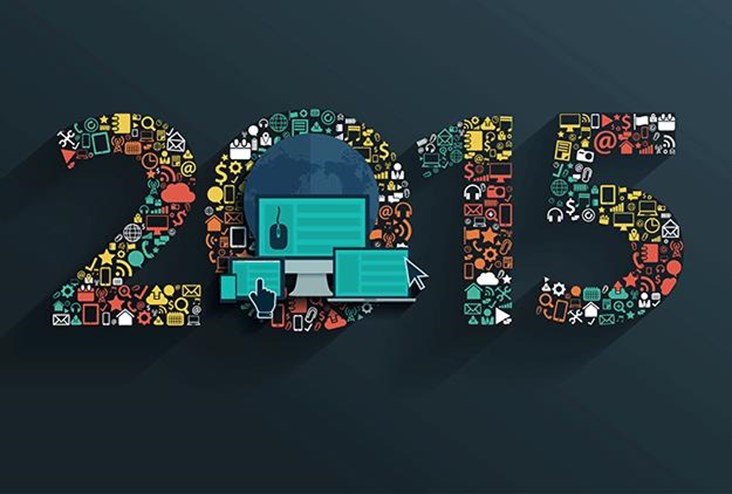
For creative agencies, there’s a positive side to technology and a less positive one. The good part is that technology is allowing us to embrace innovation and come up with “new-improved” ways of reaching the consumer. On the other hand, quite often today’s creative agencies lag behind when it comes to adapting to these light-speed changes and have to push themselves on just to stay in the race.
The thing about technology is that it follows the “change is a constant” mantra to the letter. At times, the pace of change is simply too fast for a profession that some describe as the second oldest in history. Now that "word of mouth" has become "word of mouse", and clicks and swipes have blurred lines of engagement, agencies have to refocus, remodel and re-contextualize to adapt and face the future.
Advertising 2.0 Beta Version
Adapting is not a new concept for ad agencies. They are the ones that coined the phrase “new and improved” and slapped it on everything from detergents to decongestants, electronics, etc. Changing agency structure, setting up new divisions, re-thinking HR strategies and revamping business strategies have always been integral to managing an ad agency. But when it comes to “adopting” technology (one step beyond adapting to it) agencies find they need to do some serious introspection and re-evaluate everything from the ground up.
The creative agency today is really a content agency. The business is a hybrid of "Campaign" and "Always On". Most creative agencies are used to the Campaign mode. They are familiar with the modus operandi of brand building through research and insight revolving around a singular idea - the unique selling proposition (USP), for those who remember. Such a model centers on high production values and reaches consumers via a media plan that is container driven and focused on a brief. In other words, it is boxed in. Today, agencies have to focus on experience building via an Always On mode. This is replacing one-way communication with dialog that involves listening to consumers, responding and interacting with them. Ads are making way for content windows where the key is lightweight distribution, i.e. the ability to publish and distribute in a timely and effective manner.
Creative agencies are racing to adapt to this shift from one-way communication to a world where the brand and consumer engage in a dialog. The old 4-step AIDA model (Awareness, Interest, Desire and Action) is being replaced by one that is social media-driven and Always On. Multiple stages of brand and consumer locked together in shared interest and action, loyalty, advocacy and beyond. At the core of this new order is content. Every bit of brand-consumer interaction is a bit of content, so no wonder creative agencies today are re-positioning themselves towards the creation and delivery of content.
A New Breed of Creative People and Agencies
Adapting to change entails an entirely new look at how the business operates. Integrated offerings are becoming key in the new world. To ensure their survival and the survival of the products they deliver, agencies require more than just evolutionary change; they need a radical revolutionary, disruptive model. Today, creative agencies that are planning and implementing consumer engagement strategies need to ask all the right questions in order to build a complete picture. Hiring creative talent today requires deep diving to discover how aware that talent really is when it comes to technology's possibilities, new avenues, behaviors changing on a day-to-day basis, etc. Agencies are looking for a new breed of "creative technologists" who can harness the power and prowess of technological advances to create endearing, entertaining experiences. Specialized staff is recruited on a continuum, based on niche ability and adaptability when it comes to new emerging platforms. For instance, in the new hybrid generation, copywriters need to understand SEO, art directors need to have a handle on UX, and production staff have to understand file formats and sizes like never before. Some agencies are diving into the deep end of the talent pool to seek out the best "digital pure plays" - specialists by specific genres such as the Vine generators, the Instagram creators, the Twitter warriors, etc. And the road to change doesn't stop at recruitment. It reevaluates the way agencies are structured and the environment in which employees are nurtured and grown to retain this new breed of talent. Internal structures need to be liquid so that technology and content-related exchanges flow freely.
Of course, there is the risk of going overboard and believing that technology is a solution in itself. To avoid this, all agencies need to keep in mind that, at the end of the day, technology is merely an enabler, a connector. There's no need for agencies to become tech companies overnight, but each and every one of them does need to understand technology and be comfortable in procuring and using innovative solutions and platforms. Creativity in this digital age is still about recognizing target audiences' behavior, their environment, their interests, passions, etc. While it is becoming ubiquitous, technology should remain self-effaced, as if "hidden in plain sight".
Futureproofing the Ad World
The focal point for a creative agency remains - and will always be - connecting the brand to the consumer. Its fundamental mission is to add value to a client’s business and solve problems. Everything else is a means to that end. In this context, technology lends increased flexibility and agility for an agency to meet its core requirements. In other words, it becomes futureproof.
a) Structure: Creative agencies have to be open to a versatile structure. At the center of the call for innovation, there needs to be a right mix of people, set up and operations to develop and deliver the end product. This means having all the right people with the right skill sets in the right places, and having a liberating, open structure and business model where they can stay on-course, be inventive and thrive. The way of the future is a malleable structure equipped with a genuine setup that converts data - often large data - into clever insights. It is crucial that everyone should be 100% comfortable in this new structure.
b) Business models: A new business model will entail a long hard look at billing procedures, revenue, remuneration and contracts. If digital-driven engagement today is asking for a Cost per Acquisition or Cost per Lead model, are agencies stuck with retainers? Should creative agencies bill on successful engagement patterns? Should they compare volume and depth of dialog with the number of print ads rolled out? Some relationships are moving from retainer models to project-based billings. Others are moving from lump sum project fees to views generated on YouTube (True Views, not robot views - and yes, one can tell the difference). In short, there is a move to a startup behavior with openness to whatever comes - and goes.
c) People: It is not enough to continuously hire new talent to keep up with the demands of the new age. Nor to keep letting people go because their skill sets are not aligned with the latest trends and technologies. People need to be nurtured so that they are keen and willing to stay up to date. For that, they need to have the right resources and leadership that will guide them into the future.
d) Product: This factor is ever changing, ever evolving, always following trends and analyzing consumer patterns to determine what’s hot and what’s not. There is no room for second guessing; agencies need to go with the tide and ride the waves to generate the maximum impact and reap the highest benefits for clients’ brands. Even within individual platforms like YouTube, the possibilities are always increasing as technology introduce new ways to engage consumers. Who could have predicted that the 5-second video would emerge as a powerful marketing tool? And only a few months ago, Snapchat or Vine were still not considered viable marketing streams. The future holds tempting promises with IoT, wearables and quite a few more innovations. To navigate these waters, agencies will need insight and people within their structure who can spot the potential ahead of the crowd.
e) Clients: Getting clients on board is important because if they don’t share this vision of things to come in advertising, agencies cannot be truly futureproof. There’s no point in building up a structure, capability and talent if a client does not believe in it. The success of this enterprise requires shared learning, shared data, some guidance and a lot of convincing arguments when heralding the future.
In short, heralding the future is how agencies will stay ahead of the competition. They need to take a courageous stand when visualizing and actualizing tomorrow, today. And to make it happen, they will need to boost their resources qualitatively and increase their agility so they can swim, not sink.
Latest Business
Intelligence Report












